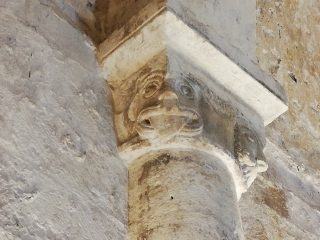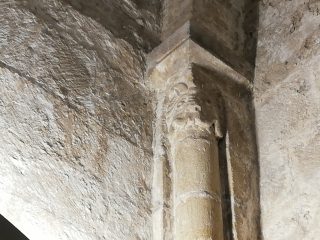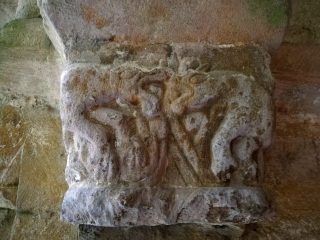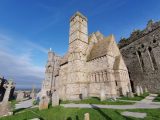**************************************************************
Cormac’s Chapel remains somewhat an enigma to scholars. Its mismatched blind-arcades, unfinished floral patterns, and off-centre chancel arch have kept historians occupied for decades arguing over the minutiae of the Chapel’s design. However, one of its most overlooked features, and one of its most interesting, is the collection of strange beasts carved throughout the Chapel. Inside and out, and dotted throughout the nave and the chancel are a collection of carvings showing strange creatures. These are commonly known as grotesques or chimeras. They are generally mythical beasts, or hybrid creatures showing animal and sometimes human features. These creatures can be found all across Europe and were generally carved on religious buildings between the 12th and 17th centuries, and protrude from the walls to make sure they stand out. They are generally associated with the rise of Gothic architecture in the later 12th century, so the grotesques found in Cormac’s Chapel represent an early example as the Chapel was built in the early 12th century between 1127 and 1134. Grotesques grew out of the tradition of the gargoyle which are similar in nature, often displaying fantastical creatures, but always around the termination of a waterspout. Cormac’s Chapel does, in fact, have one gargoyle on its outer wall, but the rest of the carvings are grotesques.

Inside the nave of the Chapel, several strange creatures can be seen including a horned lion, possibly a bat-like creature, and also a dragon-type creature with a human head clasped between its teeth. The damaged face of a bug-eyed grotesque can still be seen in the chancel arch. Inside the chancel, above the remains of the rare fresco paintings are other creatures reminiscent of horses baring their teeth, sitting next to more life-like human faces. Even some of the human faces that adorn the capital stones high up in the nave have a touch of the macabre as they pull faces and stick their tongues out.


Outside, several grotesques adorn both the north and south walls, although these are so eroded by weather and time that their original form is now lost to us. However, the strange beasts are not confined to just grotesques and capital stones. Both north and south portals have tympana with carved scenes. The much eroded south tympanum displays the tentatively identified ox of St. Luke, while the north tympanum shows the lion of St. Mark. However, neither of these are mythical or hybrid creatures. It is the figure to the right of the lion that is of interest as it depicts a centaur – a figure from Greek mythology that was half-man, half-horse. It can only be speculated if the tympanum on the south portal once showed such a figure as well.


There is no consensus on what the meaning of these grotesque carvings are. Some consider them to be merely decoration, expressing the imagination and whimsy of the period in which they were carved. Others have ascribed more religious connotations to them, arguing that as the church wanted sculptors to be preachers in stone, that these carvings were meant to teach people about sin and warning them not to be blasphemous. Another interpretation is that they were carved to ward away evil spirits from the buildings, and cast a watchful eye over the people. The truth may be somewhere in the middle. Whatever their intended meaning they still cast a watchful eye over Cormac’s Chapel today.



